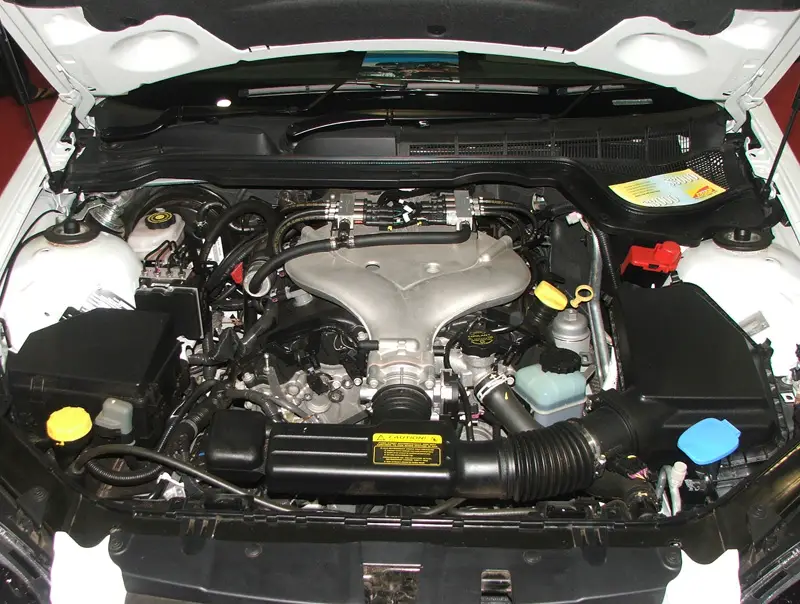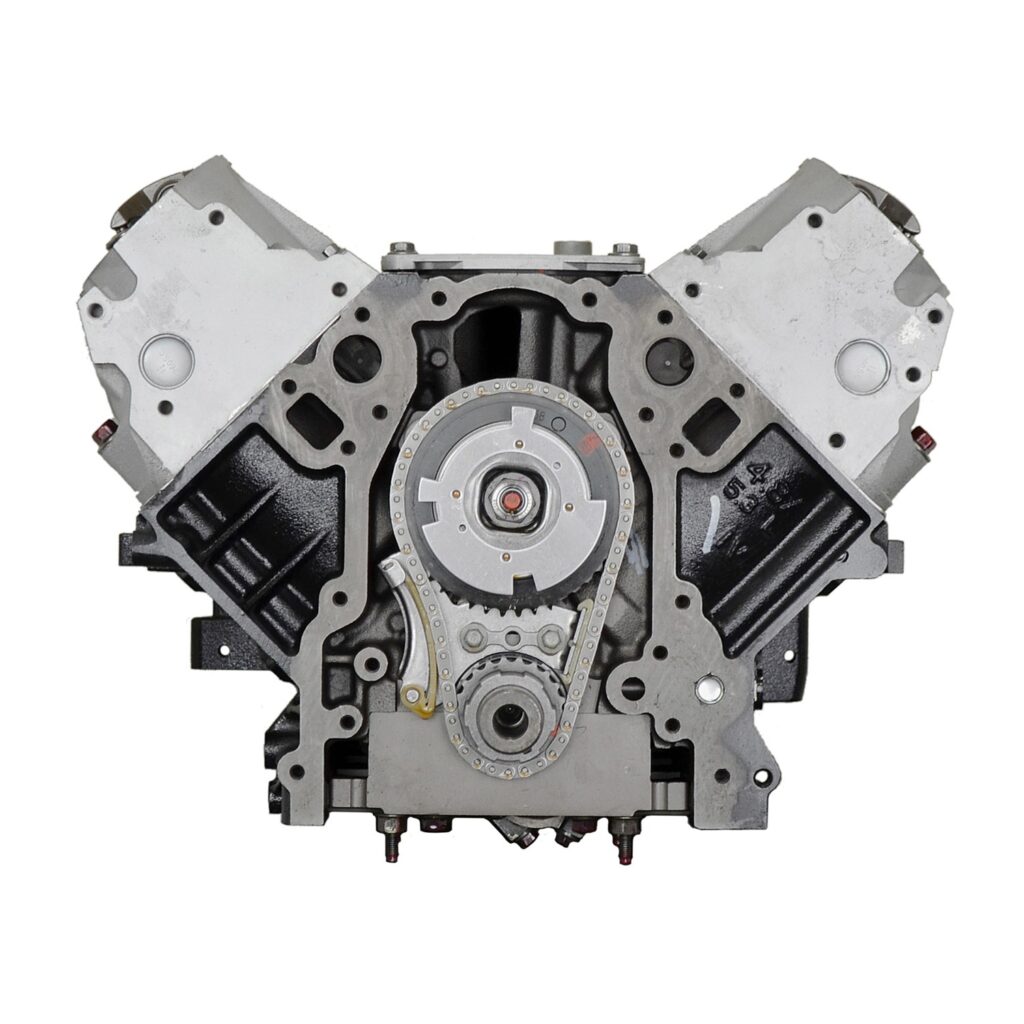The Cadillac 3.6L engine often faces timing chain issues, oil consumption, and carbon buildup. These problems are common in older models and can lead to costly repairs if not maintained properly.
The Cadillac 3.6L V6 engine, part of GM’s High Feature V6 (HFV6) family, has been widely used across various Cadillac models since the mid-2000s. It’s known for smooth power delivery, solid performance, and versatility across sedans and SUVs. However, while the 3.6L engine has proven to be relatively durable, it isn’t without its share of problems — especially in earlier model years.
In this post, we’ll explain the most common issues associated with Cadillac’s 3.6L V6 engine, explain what causes them, how to identify symptoms early, and what repairs typically involve. If you’re considering buying a used Cadillac or currently own one with the 3.6 engine, this is the no-BS guide you need.

Contents
- 1 The Cadillac 3.6L Engine
- 2 Cadillac 3.6 Engine Problems
- 3 Is the Cadillac 3.6L Engine Still Worth It?
- 4 Frequently Asked Questions
- 5 Final Thoughts
The Cadillac 3.6L Engine
The 3.6L V6 engine has gone through several iterations:
- LY7 (2004–2011) – The first-gen naturally aspirated version.
- LLT (2008–2011) – Introduced direct fuel injection.
- LFX (2012–2015) – Improved emissions and performance.
- LGX (2016+) – Lightweight construction, better efficiency.
- Twin-Turbo LF3 & LF4 (V-series models) – High-performance variants.
Most of the issues are concentrated in the LY7 and LLT versions, particularly those produced between 2004 and 2011.
Cadillac 3.6 Engine Problems
The Cadillac 3.6L V6 engine, found in several Cadillac models, is generally known for its performance and reliability. However, like all engines, it can experience a few issues. Here are some common problems associated with the Cadillac 3.6 engine:
1. Timing Chain Wear and Failure
Affected Models: 2007–2011 Cadillac CTS, SRX, STS (with LY7 and LLT engines)
Problem:
One of the most notorious and costly problems with the 3.6 engine is timing chain stretch or premature wear. These engines use a timing chain, not a belt — which should last the life of the engine under normal conditions. Unfortunately, poor PCV system design, extended oil change intervals, and early chain material flaws often led to slack and misalignment.
Symptoms:
- Check engine light (P0008, P0009, P0016 codes)
- Rattling noise from the front of the engine
- Poor acceleration or fuel economy
- Engine misfires or rough idle
Why it Happens:
Timing chain tensioners rely heavily on proper oil pressure and cleanliness. When the engine oil breaks down or sludges up — especially when oil changes are skipped — the tensioners fail to maintain proper chain tension.
Fix:
- Timing chain kit (chains, guides, tensioners)
- Labor-intensive: often 10+ hours
- Average cost: $1,800 to $2,800 depending on shop rates
2. Oil Consumption and Low Oil Pressure
Affected Models: Mostly LLT engines (2008–2011)
Problem:
Another recurring issue is excessive oil consumption. Some owners report needing to add a quart or more between oil changes. Over time, this can lead to low oil pressure, triggering engine wear or even failure.
Causes:
- Worn piston rings or valve guides
- PCV system design flaws
- Clogged oil passageways
Symptoms:
- Oil light flickering
- Engine knocking or tapping
- Oil smell from exhaust
- Blue smoke from the tailpipe
Fix:
- Short term: Monitor oil levels and change oil every 3,000 miles
- Long term: Engine teardown and rebuild
- Costs vary: Minor fixes around $500; full rebuilds can hit $4,000+
3. Carbon Buildup on Intake Valves
Affected Models: LLT and LFX engines with direct injection
Problem:
Direct injection engines inject fuel directly into the combustion chamber, bypassing the intake valves. This design helps with fuel economy and power but doesn’t clean the intake valves, which allows carbon deposits to build up over time.
Symptoms:
- Rough idle or hesitation
- Check engine light (misfire codes)
- Decreased MPG
- Cold start issues
Fix:
- Walnut blasting (manual cleaning of intake valves)
- Cost: $400–$700 depending on labor and severity
- Prevention: Catch can systems and high-quality oil
4. Water Pump and Thermostat Failures
Affected Models: All generations
Problem:
Coolant system components — especially water pumps and thermostats — tend to fail prematurely. This can lead to overheating and, if ignored, serious engine damage.
Symptoms:
- Coolant leaks near the front of the engine
- Overheating
- Heater not working properly
- Low coolant warning
Fix:
- Water pump replacement: $600–$1,000
- Thermostat replacement: $300–$500
- Always replace coolant and inspect hoses at the same time
5. Camshaft Actuator Problems (VVT Issues)
Affected Models: LLT and LFX engines
Problem:
The Variable Valve Timing (VVT) system uses camshaft actuators to adjust valve timing. Oil contamination or sensor failure can cause the system to malfunction, triggering engine performance issues.
Symptoms:
- Engine light (VVT or camshaft position codes)
- Hesitation or surging
- Poor idle
- Loss of power
Fix:
- Replace camshaft actuators and clean oil passages
- Update ECM software (in some cases)
- Cost: $400–$1,000 depending on extent

Is the Cadillac 3.6L Engine Still Worth It?
Later versions (LFX and LGX) are more refined and reliable, but earlier generations — particularly the LY7 and LLT — are known for these chronic issues. If you’re buying a used Cadillac with a 3.6L engine, consider:
- Maintenance records — Frequent oil changes are critical
- Engine codes — Scan for timing chain-related codes
- Mileage — Higher mileage models (over 120k) are more prone to problems
- Pre-purchase inspection — A compression test and scan tool can save you big
If maintained well, these engines can run beyond 200,000 miles. But if neglected, the repair costs can rival or exceed the car’s value.
Frequently Asked Questions
Here are some FAQs about Cadillac 3.6 engine problems –
1. How long does a Cadillac 3.6 engine last?
With regular maintenance and timely oil changes, the 3.6L engine can last 200,000+ miles. However, earlier models with LY7 or LLT engines may require significant repairs along the way.
2. Is the Cadillac 3.6L V6 a good engine?
It’s a strong performer and relatively refined, especially in newer models. The LFX and LGX versions are more reliable. The LLT and LY7 have known issues, particularly with timing chains and oil consumption.
3. How do I know if my timing chain is going bad?
Listen for a rattling sound on cold starts, check for engine codes like P0008, or watch for reduced performance. If the chain skips, it can cause major internal engine damage.
4. What kind of oil is best for the Cadillac 3.6 engine?
Use synthetic 5W-30 or dexos-approved oil, depending on model year. Always follow the owner’s manual and change it every 3,000–5,000 miles (not 7,500+ like GM originally suggested).
5. Can I prevent carbon buildup in my direct injection engine?
Yes — installing an oil catch can, using top-tier fuel, and performing intake valve cleaning every 60k–80k miles can help reduce buildup.
Final Thoughts
The Cadillac 3.6L V6 is a capable engine when maintained well, but it’s not without its flaws. If you’re driving or buying one, especially from the 2007–2011 range, be aware of the potential for timing chain, oil, and carbon-related problems.
Got questions or personal experience with this engine? Drop a comment below — I’d love to hear from fellow gearheads.